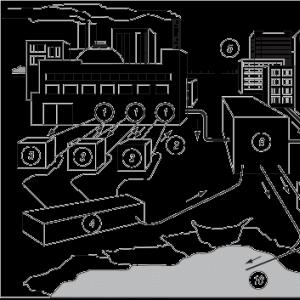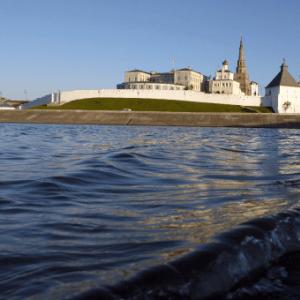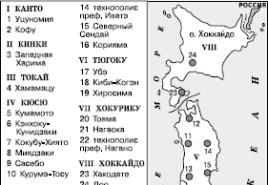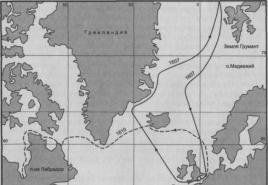A small message about nature conservation. Protect nature to keep your life
Nature protection - a set of measures covering the protection, rational use and restoration of objects of animate and inanimate nature.
Here are just a few alarming facts. From the bowels of the Earth, 100 billion tons of minerals are removed annually (25 tons per person). More than 90% of them goes to waste. The amount of oxygen consumed by individual countries already exceeds the production of oxygen by the plants of these countries. The rainforest rainforest (the main “lungs” of the Earth) has been destroyed by more than 40%. Its cutting continues at a speed of over 20 hectares per minute! Nearly 1,000 species of animals and 25,000 species of plants are now under threat of extinction. The main reasons for this are destruction, over-harvesting, suppression of native species by animals resettled by humans from other geographic areas, and chemical poisoning of the natural environment. Humanity, having accumulated unheard-of technical power, never ceases to strive for the benefits of today. This entails a depletion of earthly wealth and undermines the foundation.
The conflict between man and nature did not arise all of a sudden. It grew gradually. Our ancestors also noticed that with an excessive increase in the number of livestock in a limited area, fat pastures turn into deserts. Thoughtless hunting, burning of forests, extermination of fish in reservoirs often left people without the necessary funds. Therefore, even in ancient times, people cared about the rational use of natural resources, about their preservation and enhancement. There were bans on catching animals, grazing pastures, deforestation. They began to allocate reserved lands, to protect and breed valuable animals and birds. These were the first feeble attempts to balance the use of natural resources with their protection and restoration. However, the balance was not reached. And nature, and with it humanity, as an integral part of it, suffered more and more damage.
By the beginning of the XX century. it became obvious that special and effective measures must be taken. The first International Congress on the Conservation of Nature was held in 1913, but the problem of the impoverishment of the Earth continued to aggravate. In the second half of our century, it has become on a par with other, closely interconnected global problems: saving the world from a nuclear catastrophe, protecting the environment, increasing the number of people on Earth (population explosion), fighting hunger, overcoming the energy crisis. The cause of nature protection, like the cause of peace, concerns every person on Earth, depends on his mind, activity and goodwill. It requires the efforts of all states and peoples.
Only a deep knowledge of the laws of nature, their correct application in practice, general natural science education and upbringing will give humanity the opportunity to overcome the calamity that is now called the ecological crisis, that is, the consistent impoverishment of nature, threatening the death of many species of plants and animals, and ultimately undermining the base of human existence. The experience of a number of countries, primarily socialist ones, international cooperation has already shown that with a scientifically grounded organization of the protection of natural resources and their rational use, many environmental difficulties can be overcome.
Grafting cedar on pine allows this valuable plant to be promoted to new areas. Voronezh State Reserve.
 Bustard. Red Book.
Bustard. Red Book.
 Gray and Siberian Cranes (right). The Siberian Crane is the rarest bird listed in the Red Book. Oka State Reserve.
Gray and Siberian Cranes (right). The Siberian Crane is the rarest bird listed in the Red Book. Oka State Reserve.
 Plot of virgin feather-grass steppe. Central Black Earth Reserve named after V.V. Alekhin.
Plot of virgin feather-grass steppe. Central Black Earth Reserve named after V.V. Alekhin.
 Avdotka. Red Book.
Avdotka. Red Book.
Rose seagull. Red Book.
 Black stork. Red Book.
Black stork. Red Book.
In many reservoirs of our country, the white water lily has become a rare plant. It must be protected in every possible way.

These bustards are hatched in an incubator. The grown birds will be released into nature.
It is no secret that the connection between man and nature is interdependent and inseparable. We are largely dependent on the climate, the state of the atmosphere, the amount of the harvested crop and the purity of the surrounding air. And if we want to survive, we must protect nature.
Nature is completely dependent on our relationship to her. The more industrial waste we dump into rivers and lakes, the more we pollute the atmosphere, the worse the ecological situation on the planet becomes.
A person can protect himself. He builds shelters from the rain, comes up with new methods of farming, fences off dirty air outside with air filters.
There is no one to protect nature. And she begins to slowly take revenge on her offender - a person.
In ecologically unfavorable regions, the number of children who are already born sick is sharply decreasing.

Phenomena that are not typical for one region or another, but that threaten the lives of people, are increasingly emerging in the atmosphere. Remember the tornado in the Kaluga region?
The land gives less and less “clean”, independent of the harvest. Do you know how GMOs will affect your descendants? Maybe if we fail to protect nature from ourselves, in a few decades there will be creatures on Earth that only vaguely resemble humans?
Today, more and more scientists are inclined to believe that the biblical legends about people who lived for six hundred years are true. After all, then there were no factories, people did not know, they ate pure, natural products and drank live, not bottled water. Maybe if we can protect nature, our life will increase again to several hundred years?

Humanity is striving into space. Very soon it will take place. People are going to establish a settlement there, because the return to Earth will be impossible. But is there a guarantee that the built colony will not violate Mars, as people disturbed the peace of the Earth? Maybe if we fail to protect the nature of our planet, it doesn't matter if it's Earth or Mars, the Cosmos itself will take up arms against us and simply destroy us without a trace?
Let's protect nature to become a truly magnificent space race. To live long. To be strong and healthy.
What does it mean to protect nature? Let us recall several important points:
- we need to make our production and agriculture harmless. It is necessary to stop clogging the ground and air, stop poisonous drains; not to arrange landfills, but to recycle garbage;
- preserve the natural environment. Create national parks, build reserves, equip reserves;
- stop destroying fish, animals and birds, especially their rare species; stop poachers;
- create a safe environment for their own existence. And for this it is necessary to completely change the worldview of people, to instill in them which is impossible without a common culture.
We have no right to destroy what, in the creation of which we did not take part. We must protect nature in order to save our lives!
INTRODUCTION
The protection of nature is the most important task of mankind. The modern scale of human impact on the natural environment, the commensurability of the scale of human economic activity with the potential ability of modern landscapes to assimilate its unfavorable consequences. Crises in the development of the natural environment, the global nature of the current crisis in the ecological situation.
Definition of concepts: natural environment, geographic environment, nature protection (narrow and broad understanding of the term). The main object of nature protection. Interdisciplinary nature of environmental problems. The main aspects of environmental problems (environmental, resource, genetic, evolutionary, economic, social, demographic, historical).
History and main stages of interaction between human society and nature, the main methodological levels of cognition of problems and their interaction. Development of environmental knowledge. Nature management in the early stages of civilization. G. Marsh's ideas, A.I. Voikova, V.V. Dokuchaeva, A.E. Fersman. The doctrine of the noosphere by V.I. Vernadsky. Contribution of the concept of the noosphere to the development of the natural-scientific picture of the world and the scientific worldview.
GEOGRAPHICAL ASPECTS OF NATURE PROTECTION.
"Geographicization" of ecology and "greening" of geography. The importance of taking into account the spatial organization of the territory in the development of environmental policy. The tasks of geography in solving environmental problems: studying the mechanism of the impact of human economic activity on geosystems, creating a project for the rational organization of the territory, forecasting the state of the natural environment.
Geography and ecology. Development of ecology as a science. Interpretation of the term "ecology" in a narrow and broad environmental sense. The tasks of social ecology and human ecology. The concept of geoecology.
Geographic information systems and their role in the development of environmental problems. The role of modeling and systems analysis in the study of the interaction of society and the natural environment. Global models of the world's development. A critical analysis of the ideas of the Club of Rome.
NATURAL RESOURCES AND PROBLEMS OF THEIR PROTECTION
Various approaches to the classification of natural resources. Alternatives for the use of natural resources, their multifunctionality and interchangeability. Criteria for the optimal use of resources depending on the size of their reserves and economic significance, needs and feasibility of development. The principle of complexity in resource use.
Methodological problems of geographical resource studies. Analysis of the role of resources as sources of raw materials and environment-forming factor. Problems of economic and non-economic assessment of resources. Causes of resource degradation, measures for the protection of various types of various natural resources.
1. Land areas of the world.
Land cadastre. The role of land reclamation in their development. Adaptive farming systems.
Diversity and reserves of minerals, their finiteness and non-renewability. Energetic resources. Alternative energy sources. Prospects for the use of nuclear power plants.
2. Water resources and methods of their assessment.
Water balance and water availability. Saving water consumption. Resources of the oceans.
3. Biological resources.
Specific tasks and problems of wildlife protection. The concept of resilience and vulnerability of populations and ecosystems. Levels of abundance, tolerance and specialization of populations, structure and functioning, processes of self-restoration of ecosystems. Natural and anthropogenic factors affecting populations and ecosystems.
Wildlife Conservation Strategy. The concept of rare species of plants and animals, gradation of rarity. Factors determining the rarity of species, territorial distribution of rare species, strategies for their conservation and restoration. Protection of rare species in nature reserves and reserves, in zoos and nurseries, botanical gardens, preservation of the gene pool in collections, conservation of the genome. race book of the International Union for Conservation of Nature and Natural Resources (IUCN). The Red Data Book of the USSR and the Red Data Books of the former USSR republics as actual documents and sources of scientific information.
The biological diversity of the planet and the problem of its degradation. The problem of protecting the planet's gene pool.
MAIN ENVIRONMENTAL PROBLEMS.
1. Pollution of the natural environment in the course of economic activities.
Global and local changes in the quality of atmospheric air, water, soil, biota as a result of pollution. Consequences of air pollution. Urban air pollution, acid fallout, greenhouse effect, ozone depletion. Geographical features of the distribution of pollutants in the atmosphere. The impact of atmospheric pollution on biota and human health. Measures to combat air pollution.
Freshwater pollution, eutorification. Oil pollution. Water purification methods.
Soil contamination. The scale of the use of fertilizers and pesticides, the ways of their detoxification. Integrated pest management techniques. Indicators of the possible rate of transformation and removal of technogenesis products in soils.
Damage to biota as a result of environmental pollution. Technophilicity and biophilicity of elements. Indicators of maximum permissible concentrations of pollutants. The concept of technobiogeomes.
2. Violation of the circulation of substances.
Influence of imperfection of technological processes, high losses of raw materials, dispersion of materials during wear, chemicalization of agriculture on the circulation of substances. Change in the circulation of the main biophilic elements, the circulation of metals.
3. Exodynamic natural-anthopogenic processes.
Accelerated soil erosion. The scale of manifestation in different natural conditions and with different types of economic impact. Dependence of the intensity of accelerated erosion on zonal factors.
The reasons for the development of accelerated erosion. Quantitative assessments of erosion processes. Negative consequences of accelerated erosion. Erosion control and prevention measures.
Deflation. The main causes and manifestation in different zones. Dust storms and their distribution around the globe. Degree of soil deflation.
Desertification as a complex natural and anthropogenic process. The scale of manifestation and the main natural prerequisites and anthropogenic causes. Methods for a comprehensive assessment of the desertification process. World Atlas of Desertification. Landscape approach to the study of the desertification process. Measures to prevent and combat desertification (experience of different countries).
4. Formation of anthropogenic modifications of landscapes.
Anthropogenic landscape science and the history of its formation. The concept of the modern landscape. The main properties of anthropogenic modifications of landscapes, their types and degree of transformation. Sustainability of landscapes. Differentiation of modern landscapes of the world, their classification and typology.
Deforestation. The problem of degradation of forest landscapes in different natural zones. Degradation of rainforests and its consequences. Secondary biotic successions. Man-made savannahs. Alternative and traditional land use systems in the humid tropics. Agroforestry.
5. Protection of ecosystem diversity of the biosphere.
The concept of ecotone as a zone of increased diversity with reduced resistance. Conservation strategy for homogeneous and complex complexes of ecosystems. The multifunctional significance of protected areas. Types of protected areas. Creation and development of a network of protected areas in the world and the former USSR. The system of protected areas in the Russian Federation. Reserves, micro-reserves, game reserves, national natural parks.
The concept of biosphere reserves (reserves). The role of domestic methodology and methodology of nature reserve management in the formation of the concept of biosphere reserves and the definition of their goals and objectives. World network of biosphere reserves and other protected areas by continent and by country.
ECOLOGICAL AND ECONOMIC ASPECTS OF NATURE PROTECTION.
Ecological and economic projects for the development of the territory and nature protection activities. Organization of environmental protection management. Modeling and mapping of ecological and economic systems. Sustainable development concept.
Nature is a wonderful world that surrounds a person. These are mountains, fields, forests, rivers, lakes. Nature provides people with shelter, food and clothing, this is the air they breathe. Not taking care of nature means not taking care of yourself and your loved ones.
At present, an ecological catastrophe on earth is a huge problem for mankind. There is a daily pollution of rivers, seas and oceans with industrial and industrial waste, air - caustic fuel of vehicles.
Hectares of forests are constantly being cut down, animals and birds are being exterminated at the hands of poachers, fish are dying from the poisonous emissions of enterprises into water bodies.
Each person should think about how to preserve nature, how to preserve it for future generations of people.
To constantly admire the beauty of natural resources, you need to burn fires, store garbage only in the places designated for this. Do not break twigs, do not pick off tree leaves unnecessarily, do not ruin bird nests and anthills.
Today, scientists and researchers are actively involved in the development of software systems for the creation of treatment facilities, waste-free production. Extensive scientific work is being carried out on the use of environmentally friendly sources of electrical energy, such as solar and wind power plants.
Wars between states on earth can also lead to the end of human civilization. All living things will die from nuclear weapons, a mutation of living organisms will occur.
So that the elimination of all life on the planet does not happen, it is necessary for everyone, even the leader of a country, an enterprise, even an ordinary citizen, a schoolchild to understand their place in life, that only by treating nature and others with love, anxiously protecting them, it is possible to preserve the human race on earth and save him from certain death.
Composition The problem of nature protection
Labor protection is a specific set of actions that are aimed at preserving or restoring the natural resources of our planet. In addition to resources, measures are also being taken to preserve nature and animals.
The problem of destruction and irreversible processes of flora and fauna is urgent, because today human activities cover the vast geography of the planet. All activities have negative impacts on nature and animals. If we turn to statistics, then since the 80s, 1 species of animals perished every day, and vegetation every week. Forests, water bodies, just every day any part of our nature is under threat. Every year, mankind uses more than 1 billion tons of various fuels, the waste of which goes into the atmosphere. Factories and factories pollute rivers. With this, fish and plants that grow in the aquatic environment die. Recently, the issue that concerns the integrity of the planet's ozone shield has become an edge.
The planet has the ability to regenerate and self-purify, but given all the negative factors that people create, this possibility is reduced to almost zero. Therefore, our planet requires specific and decisive measures to minimize the influence of negative factors. After all, not only nature and animals are under threat, but also the human species itself. We began to build production facilities that practically do not carry any waste, treatment facilities. Also introduced norms for the use of pesticides, the exclusion of all pesticides. They also began to build reserves or protect areas where rare animals live and rare plants grow. The world community on nature conservation has compiled lists of rare endangered animals and plants - the Red Book.
In all legislative spheres of almost any state, laws are provided that should punish violations of environmental protection rules. This helped to improve the situation in the area of nature and animal protection. There is a special UN organization in the world that advocates for the protection of the environment.
Today, the issue of nature conservation is in the first place, along with other important issues in the world. You need to start small, with the consciousness of every person living on earth. Further, it is already to take care of minimizing waste, as well as to ensure the continued existence and increase of the population for endangered animals.
Grade 2, 3, 4, 5, 6, 7, 8
Several interesting compositions
- Composing The Journey of My Dreams
What could be better and more beautiful than travel? Surely nothing! After all, travel for me personally is the acquisition of new experience, meeting wonderful people, visiting wonderful places
- Composition based on the painting by Volkov At the end of winter (description)
Before us is the famous painting by the famous artist Efim Efimovich Volkov "At the end of winter". The painting was painted in 1890, at the very peak of Efim Efimovich's work.
- Composition of the tragedy Boris Godunov Pushkin
The work "Boris Godunov" is dedicated to the difficult relationship between ordinary people and the tsar. It was this poem that was the turning point in the work of Pushkin. It symbolizes, in a way, the transition from lyric poetry to historical realism.
- Composition What is the continuity of generations? (final)
I don't want to be like you! This is probably what the teenager often talks about to his parents, or at least thinks about it. Even if it is not said in anger or desire to harm, at least part of this vow
My dad's name is Arkady. He works as a chauffeur at the bakery. He delivers hot bread and rolls to the shops every morning.







